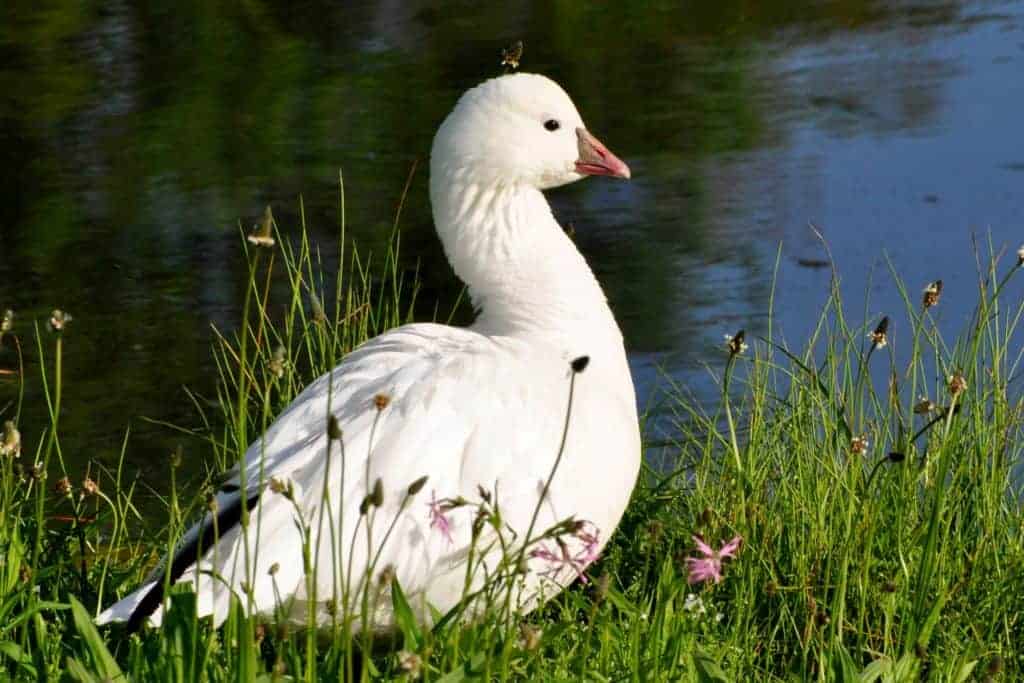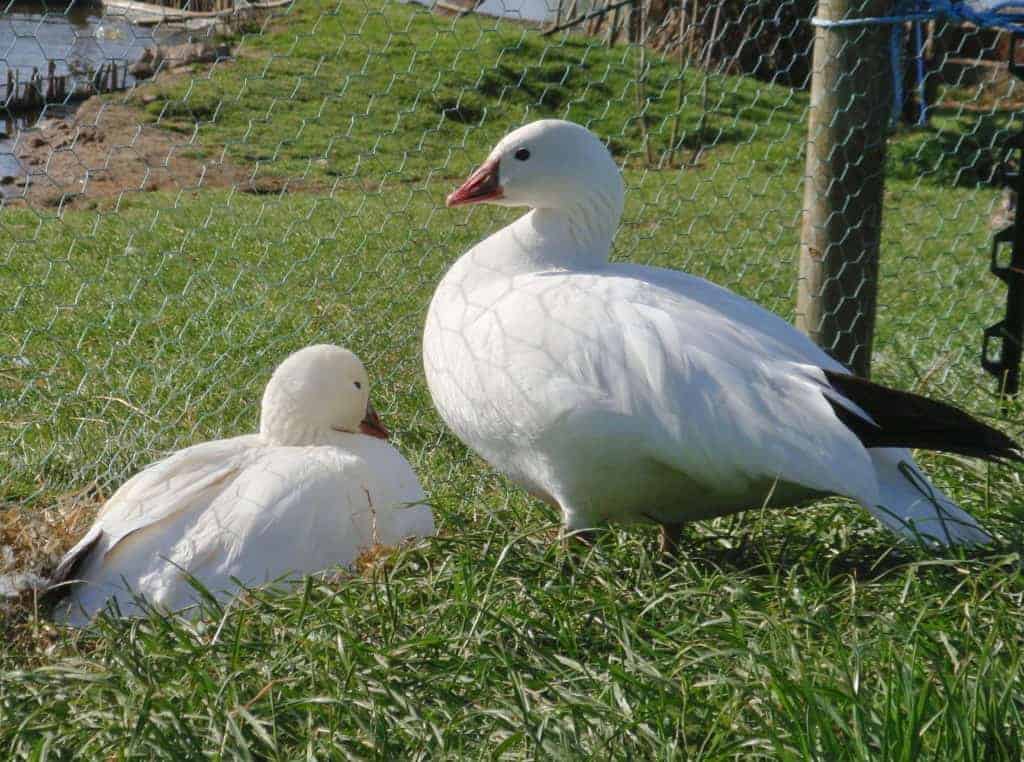Ross’s Goose

Anser rossii
The delightful little Ross’s Goose is a more petite version of the familiar Snow Goose. Like the latter, its plumage is snow-white, contrasting with its black pinions, while there is also a blue phase, though it is much rarer than with the Snow Goose. The tiny bill is distinctive, and it lacks the so-called grinning patch (space between cutting edges of mandibles) of its larger relative. Old ganders typically display bluish warts at the base of the red bill. Their calls are higher pitched and less musical than those of the Snow Goose.

An arctic breeding bird, its nesting grounds in the Queen Maud Gulf Migratory Bird Sanctuary in the central Canadian Arctic were only discovered in 1938. They winter in some of the southern states of the USA. On migration, they are often found with the Cackling Goose Branta hutchinsii.
In recent decades the population has expanded considerably, with nesting birds now to be found as far east as Baffin Island, and flocks now wintering regularly in New Mexico, Louisiana and Texas.
At little more than a kilo in weight, these petite geese are represented in many mixed collections. Except when defending a nest, the Ross’s Goose has pretty mild manners. A few years ago, it was suggested that they were hard to breed. The likelihood of weak blood lines as a result of inbreeding may have been a factor. With so many of our birds, a lack of genetic diversity impacts on future generations and the young become less and less hardy. General advice is to get strains from known different sources, and place colour rings on the birds to help with identification. As the Ross’s Goose naturally nests in a colony, having several pairs is not hard to manage. If the eggs are marked and the young can be reared separately, it is possible to genuinely offer an unrelated ’pair’ for sale at a later date. Parents will rear young well, but as the broods mingle they become increasingly hard to identify unless ringed.
Ross’s Geese do best if kept in small flocks on fresh lawns. Only the goose incubates the clutch of 3–5 pinkish eggs, though the gander remains with her throughout. The eggs hatch after 20–22 days. Wild hybrids with Snow Geese are not uncommon, so in captivity the two species are best kept apart.
Share this page